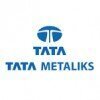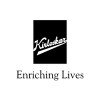Filter interviews by
VISA Steel Production Graduate Engineer Trainee Interview Questions and Answers
VISA Steel Production Graduate Engineer Trainee Interview Experiences
1 interview found
I applied via LinkedIn and was interviewed before Oct 2022. There were 3 interview rounds.

(1 Question)
- Q1. Related to iron and steel
(1 Question)
- Q1. Basic introduction
Top trending discussions






Interview questions from similar companies

Production Graduate Engineer Trainee Interview Questions & Answers
Bmm Ispatposted on 23 Jun 2023
I applied via Campus Placement
Simple quantitative aptitude questions with technical questions
(3 Questions)
- Q1. Introduction Basic questions Project related explanation
- Q2. Explain about your project
- Q3. Which is your favorite subject

Production Graduate Engineer Trainee Interview Questions & Answers
Jindal Stainlessposted on 18 Nov 2024
(2 Questions)
- Q1. Family background
- Q2. Project and internship q

Production Graduate Engineer Trainee Interview Questions & Answers
Jindal Sawposted on 27 Mar 2025
I appeared for an interview before Mar 2024, where I was asked the following questions.
- Q1. What are the key features of the iron-carbon diagram, including its important phases and corresponding temperatures?
- Ans.
The iron-carbon diagram illustrates the phases and transformations of iron and carbon alloys at varying temperatures.
The diagram includes key phases: ferrite (α), cementite (Fe3C), austenite (γ), and liquid iron.
Ferrite is stable up to 912°C and has a body-centered cubic (BCC) structure.
Austenite forms between 727°C and 1394°C, characterized by a face-centered cubic (FCC) structure.
Cementite is stable at all temperatur...
- Q2. What is the structure of a blast furnace, and what are the important zones and the temperatures maintained within them?
- Ans.
A blast furnace is a large structure used for smelting iron, featuring distinct zones with varying temperatures for efficient metal production.
The blast furnace consists of several zones: the top, the bosh, the hearth, and the tuyere zone.
The upper zone (charging zone) operates at around 200-400°C, where raw materials like iron ore, coke, and limestone are added.
The bosh zone, located below the charging zone, reaches t...
- Q3. What is the process of centrifugal casting and how is alloy addition performed?
- Ans.
Centrifugal casting is a process that uses centrifugal force to produce cylindrical metal parts with uniform density and strength.
Centrifugal casting involves pouring molten metal into a rotating mold.
The rotation creates a force that distributes the metal evenly against the mold walls.
This process is ideal for producing cylindrical shapes like pipes and tubes.
Alloy addition can be performed by mixing different metals ...
- Q4. What is the importance of stress-strain curve, what are the mechanical testings done.
- Ans.
The stress-strain curve is crucial for understanding material behavior under load, guiding design and safety in engineering applications.
Illustrates material properties: The curve shows how materials deform under stress, indicating elastic and plastic behavior.
Determines yield strength: The point where the curve deviates from linearity indicates the yield strength, essential for design limits.
Identifies ultimate tensil...

Production Engineer Interview Questions & Answers
MSP Steel & Powerposted on 26 Jun 2024
(2 Questions)
- Q1. Kiln parameters
- Q2. Manage to technical issues
Interview Preparation Tips

I appeared for an interview in Jan 2025.
(2 Questions)
- Q1. What is the lathe machine and their working function?
- Ans.
A lathe machine is a tool used for shaping materials by rotating them against a cutting tool.
Lathe machines are used for turning, drilling, cutting, sanding, and knurling materials.
They work by rotating the material on its axis while a cutting tool is applied to shape it.
Examples of lathe machines include CNC lathes, engine lathes, and turret lathes.
- Q2. What is the galvanized process?
- Ans.
Galvanization is the process of applying a protective zinc coating to steel or iron to prevent rusting.
Involves dipping the metal into a bath of molten zinc
Forms a layer of zinc on the surface of the metal
Provides corrosion resistance to the metal
Commonly used in construction for structures like bridges, pipelines, and fences
Providing a shape Drawing,
Asking -
1.Describe their views?
2. Which operation performance to done this shape Drawing on lathe machine??
3. Type of operation on lathe.
Interview Preparation Tips
Machine Design
Material Science
Thermodynamics
Production engineering

I applied via Campus Placement and was interviewed before Apr 2022. There were 3 interview rounds.

(2 Questions)
- Q1. 1. Least count of different scales like vernier calliper, micrometer etc
- Ans.
The least count of vernier caliper is 0.02 mm and that of micrometer is 0.01 mm.
Least count of vernier caliper is 0.02 mm
Least count of micrometer is 0.01 mm
Least count is the smallest measurement that can be read on the scale
It is important to know the least count for accurate measurements
- Q2. What is metal? Types of metals and there chemical composition.
- Ans.
Metals are elements that have high electrical conductivity, luster, and malleability.
Metals are typically solid at room temperature, except for mercury which is a liquid.
Common types of metals include iron, copper, aluminum, gold, silver, and zinc.
Metals can be classified as ferrous or non-ferrous based on their iron content.
The chemical composition of metals varies depending on the specific element, but they all have ...
(1 Question)
- Q1. Family details, previous experience if any, if fresher than what were the scores of qualifications
Interview Preparation Tips
- Sheet Metal
- Metallurgy

I applied via Recruitment Consulltant and was interviewed in Sep 2024. There were 2 interview rounds.
(2 Questions)
- Q1. What is stainless steel ?
- Ans.
Stainless steel is a corrosion-resistant alloy made of iron, chromium, nickel, and other elements.
Stainless steel is known for its resistance to corrosion, rust, and staining.
It is commonly used in various industries such as construction, automotive, and food processing.
There are different grades of stainless steel, each with varying levels of corrosion resistance and strength.
Examples of stainless steel applications i...
- Q2. Why annealing we needed?
- Ans.
Annealing is needed to relieve internal stresses, improve ductility, and soften the material for further processing.
Annealing helps to remove internal stresses in the material, making it more ductile and less prone to cracking.
It also helps to soften the material, making it easier to shape or machine.
Annealing can improve the microstructure of the material, leading to better mechanical properties.
Examples of materials ...
Discussed on my jobs profile
Interview Preparation Tips
- Steel making and production plan
Skills evaluated in this interview

I applied via LinkedIn and was interviewed before Feb 2023. There were 2 interview rounds.
(2 Questions)
- Q1. About Brief Completely
- Q2. Family Brief Completely
(2 Questions)
- Q1. Work Experience Briefly
- Q2. Production process brief
- Ans.
The production process involves a series of steps to transform raw materials into finished products.
Raw materials are collected and inspected for quality.
The materials are then processed or assembled according to the production plan.
Quality checks are performed at various stages to ensure standards are met.
Finished products are packaged and prepared for distribution.
Efficient coordination and communication among differ...
Interview Preparation Tips
- Production Process

(2 Questions)
- Q1. Name and biodata
- Ans.
My name is John Doe, a Production Engineer with 5 years of experience in manufacturing industry.
Name: John Doe
Experience: 5 years in manufacturing industry
Role: Production Engineer
- Q2. Technical and experience
VISA Steel Interview FAQs
Tell us how to improve this page.
VISA Steel Interviews By Designations
- VISA Steel Graduate Trainee Interview Questions
- VISA Steel Senior Engineer Mechanical Interview Questions
- VISA Steel Quality Controller Interview Questions
- VISA Steel Junior its Engineer Interview Questions
- VISA Steel Assistant Manager Interview Questions
- VISA Steel Assistant Manager Maintenance Interview Questions
- VISA Steel Site Engineer Interview Questions
- VISA Steel ITI Fitter Interview Questions
- Show more
Interview Questions for Popular Designations
- Graduate Engineer Trainee (Get) Interview Questions
- Graduate Trainee Interview Questions
- Graduate Engineer Interview Questions
- Graduate Apprentice Trainee Interview Questions
- Graduate Apprenticeship Trainee Interview Questions
- Graduate Student Interview Questions
- Graduate Apprentice Interview Questions
- Post Graduate Engineer Trainee [pget] Interview Questions
- Show more
VISA Steel Production Graduate Engineer Trainee Interview Process
based on 1 interview
Interview experience
Interview Questions from Similar Companies
Fast track your campus placements
|
Assistant Manager
78
salaries
| ₹4.6 L/yr - ₹9.5 L/yr |
|
Deputy Manager
43
salaries
| ₹6 L/yr - ₹10.4 L/yr |
|
Manager
34
salaries
| ₹7.2 L/yr - ₹15 L/yr |
|
Senior Engineer
21
salaries
| ₹3.2 L/yr - ₹6.5 L/yr |
|
Graduate Engineer Trainee (Get)
17
salaries
| ₹1.5 L/yr - ₹6 L/yr |

Jindal Saw

ESL Steel

Jai Balaji Group

Electrotherm
- Home >
- Interviews >
- VISA Steel Interview Questions >
- VISA Steel Production Graduate Engineer Trainee Interview Questions












